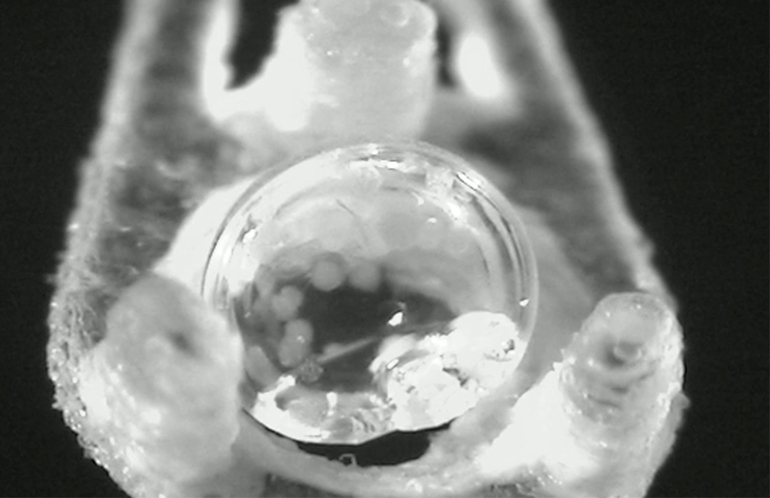Researchers at the University of Minnesota developed a cryopreservation system that allows for long-term pancreatic islet cold storage. Islet can be implanted in patients with diabetes, and can even be curative in this context, but the technique has been hampered by a lack of techniques to store donor islets beyond 24-72 hours. This latest technique, which uses a cryomesh system to remove excess cryopreservation fluid from the islets before freezing and new methods to rewarm the frozen islets, has been shown to safely store the tissue for as long as nine months.
Pancreatic islet transplantation has the potential to cure diabetes, providing recipients with the cells required to produce their own insulin in perfect harmony with blood glucose levels (beat that, insulin pumps). However, the technique typically requires islets from several donor pancreases, meaning that repeat surgeries and rounds of immunosuppression induction would be required to transplant them all. This adds up to increased risk, and has held the technique back.
Another option is to pool the islets from several donors and transplant them all in one go, avoiding the risks of repeat surgeries. However, donor pancreases are a rare commodity, and given that the islets can only be safely stored for approximately 48-72 hours, at least to date, the chances of obtaining enough islets all in one go is unlikely. Long-term islet storage would solve this, but no-one has been able to achieve it, until now.
“This exciting development by our multidisciplinary research team brings engineering approaches to solve an important medical challenge—the cure of diabetes,” said Erik Finger, a researcher involved in the study. “Despite decades of research, islet transplantation has remained ‘just around the corner;’ ever with great promise, but never quite within reach. Our technique for cryopreserving islets for transplantation could be a significant step towards finally achieving that lofty goal.”
These researchers spent a long time tweaking the various parameters required for islet cryopreservation, and have hit upon a combination of variables that appears to provide for long-term islet storage. The method involves placing the islets on a specialized cryomesh that removes most of the cryopreservation fluid, allowing the sample to be frozen incredibly quickly when it is plunged into liquid nitrogen. Then, when the islet samples are defrosted, this can also occur very quickly. Additionally, the researchers experimented with tools to aid with this defrosting process, including using lasers to produce localized heating.
So far, the University of Minnesota team has shown that the islets can remain viable in cold storage for at least nine months with an 87% survival rate and they remained functional when transplanted into rodents.
“Our work provides the first islet cryopreservation protocol that simultaneously achieves high viability and function in a clinically scalable protocol,” said John Bischof, another researcher involved in the study. “This method could revolutionize the supply chain for islet isolation, allocation, and storage before transplant. Through pooling cryopreserved islets prior to transplant from multiple pancreases, the method will not only cure more patients, but also make better use of the precious gift of donor pancreases.”
See a video showing the freezing and defrosting procedure below.
Study in Nature Medicine: Pancreatic islet cryopreservation by vitrification achieves high viability, function, recovery and clinical scalability for transplantation
